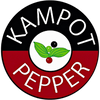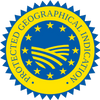The history of pepper cultivation and trade is rich, full of adventure, voyages to unknown lands, and the construction of magnificent palaces with money earned from trading peppercorns. The history associated with pepper cultivation in the Kampot region is no less significant.
The tradition of pepper cultivation in Cambodia dates back to our Middle Ages
Pepper has been cultivated in Cambodia since the time of the Khmer Empire, which represents a tradition reaching deep into the era when the Přemyslid dynasty ruled our lands. The very first detailed description of pepper cultivation in the Kampot region however, dates back to the 13th century. During this period, a Chinese envoy named Zhou Daguan arrived in the territory of present-day Kampot, who dedicated part of his writings specifically to the methods of pepper cultivation by the ancient Khmers and their customs. Thanks to this, his work remains one of the main sources of information about the culture of the Khmer Empire.
Although trade between the Old Continent and Far Asia was in full swing already in the 16th century, Europeans discovered the uniqueness of Kampot's black gold much later. This happened in the 19th century when a port was built in Kampot, where trading ships from all over the world arrived. During this era, the production of Kampot pepper intensified, only for the plantations to be soon reduced to ashes.
Territorial disputes destroyed the pepper fields
This occurred during wars between the Sultanate of Aceh and the Dutch, who originally came to the area solely for trade. However, the Dutch eventually brought destruction and fragmentation to the sultanate. Its leader, as a reward, ordered the plantations to be burned so they would not fall into the hands of Dutch enemies.
What is typical for the tradition of pepper cultivation in Kampot, however, is its ability to rise from the ashes. This was achieved even after the Aceh wars, so that by the mid-20th century, pepper from this region became the dominant spice in European markets. In 1928, most of the pepper used in France came precisely from this area, and by the 1960s, production had reached a staggering 8,000 tons per year.
The brutal political regime tried to undermine not only the will but also the traditions
As is often the case, after rapid growth, a steep decline followed. This time it was brought about by the Khmer Rouge, who decimated the entire country in an unprecedented way. The production of 8,000 tons suddenly shrank to a mere 4 tons annually, and local farmers, in an effort to prevent famine, focused primarily on rice cultivation.
Now the tradition of pepper cultivation in this region is once again being revived, and we at .pepper..field are grateful to be part of its rebirth. Since 2018, when we began fair business and cooperation in Cambodia, many things have improved. We are glad to be part of it and to watch how this beautiful country is opening up to the world once again.















